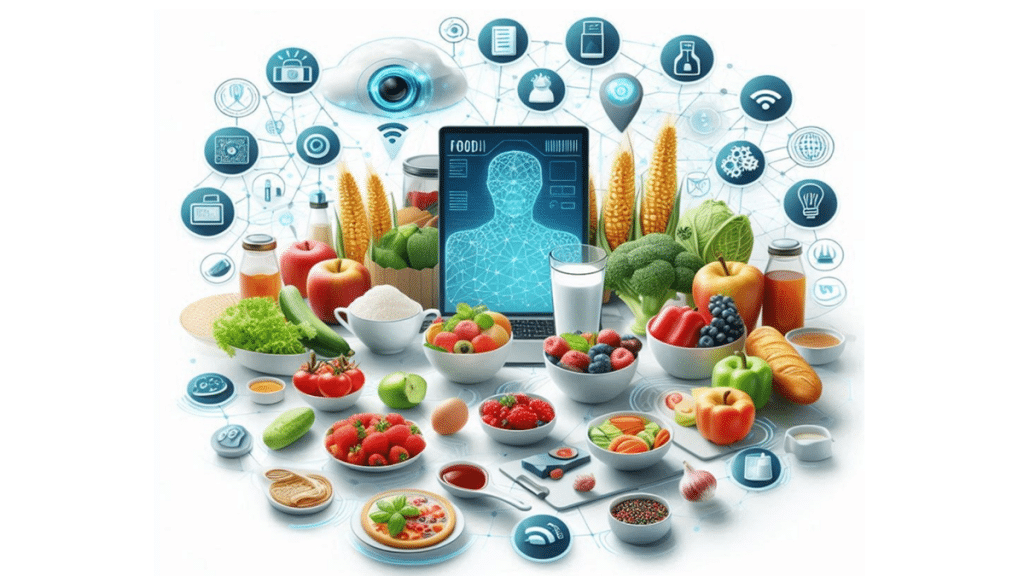Technology is moving fast, and it’s changing the way we live, work, and even eat. Lately, there’s been a lot of talk about how tech is shaking up the food industry. From how food is grown and processed to how we enjoy it, food intelligence technologies are transforming every step of the way.
In this article, we’ll dive into how these technologies are reshaping the food industry and what that means for our everyday lives.
The Rise of Precision Agriculture
Precision agriculture is a modern farming method that uses technology to gather data and make smarter decisions about growing crops. With tools like sensors, drones, and satellite imagery, farmers can track things like soil moisture, nutrient levels, and plant health. This helps them make more precise choices about watering, fertilizing, and managing pests. The result? Bigger harvests with less waste.
This move toward precision farming is a game-changer for the food industry. More efficient practices mean less food waste and more fresh produce on the market. Consumers get better quality and longer-lasting fruits and veggies, while businesses save money by reducing spoilage. It’s a win-win for everyone.
When Food Intelligence Meets the Supply Chain
Food intelligence tech is changing how we transport and store food. With tools like smart sensors, RFID tags, and real-time tracking systems, we can now monitor things like temperature, humidity, and location as food moves from farm to table. This keeps food fresh and safe every step of the way.
It’s not just about better quality and safety—it also helps cut down on waste in the supply chain. With improved tracking and visibility, companies can spot bottlenecks or issues and fix them fast, leading to smoother operations and fewer losses from spoilage or damage during transport.
The Impact on Food Processing
Food intelligence technologies are transforming the way food is processed. By using advanced analytics, AI, and automation, these innovations are making processing operations more efficient and safer. For example, smart sensors and AI-powered quality control systems can spot contaminants or inconsistencies in food products with amazing accuracy, ensuring only top-quality items make it to consumers.
These technologies also allow real-time monitoring of production lines, helping manufacturers streamline processes, cut down on energy use, and reduce waste. With data-driven insights into every step of the supply chain, food processors can quickly adapt to changes in demand or supply, keeping products flowing smoothly to market. These advancements not only make operations more efficient but also build more trust in the quality and safety of the food people eat.
How AI is Changing Food Delivery
AI is transforming food delivery by making operations smoother and improving the customer experience. With smart algorithms analyzing things like traffic, weather, and customer preferences, delivery routes are optimized to cut down wait times. The result? Food arrives fresh, hot, and on time, keeping both businesses and customers happy.
Take Domino’s Pizza, for example. They use AI in their delivery systems to track real-time data and ensure faster, more accurate deliveries. One case study showed their system improved delivery times by up to 30%, leading to happier customers and more repeat orders. By reducing inefficiencies, companies not only boost profits but also make the whole experience better for everyone. AI really is a game-changer in the food delivery world.
Machine Learning Making Food Safer
Machine learning (ML) is also stepping up to keep our food safe. By analyzing both historical and real-time data, ML can predict and spot potential food safety risks, like contamination or foodborne illness outbreaks. Advanced algorithms sift through data from inspections, supply chains, and even environmental factors to identify issues before they escalate.
A great example is IBM’s partnership with Mars to create the Consortium for Sequencing the Food Supply Chain. This initiative uses ML to detect microbial contamination in food. Studies have shown it can pinpoint pathogens quickly and accurately, enabling businesses to act fast and prevent illness. With these tools, unsafe products can be pulled before they hit shelves, protecting consumers and building trust through a strong commitment to safety.
Enhancing the Customer Experience with Chatbots and Voice Assistants
AI is becoming a bigger part of our everyday lives, even when it comes to ordering food. Companies are using chatbots and voice assistants to make customer interactions smoother and more personalized.
These AI tools can take your order, answer questions, and even suggest items based on your past orders or dietary needs. Domino’s Pizza was one of the first to jump on this trend, letting customers order through Facebook Messenger or by talking to Amazon Alexa or Google Home. It’s not just more convenient for customers—it also lets staff focus on other tasks.
Wrap Up
With the growing demand for food, AI is becoming an even bigger player in the food industry. From streamlining supply chains to improving safety and enhancing customer experiences, AI is changing how we produce, distribute, and enjoy our food. As technology keeps advancing and more data pops up, the potential for AI in this space is huge. It’s an exciting time for businesses and consumers alike to see how this amazing tech can revolutionize the food world.

